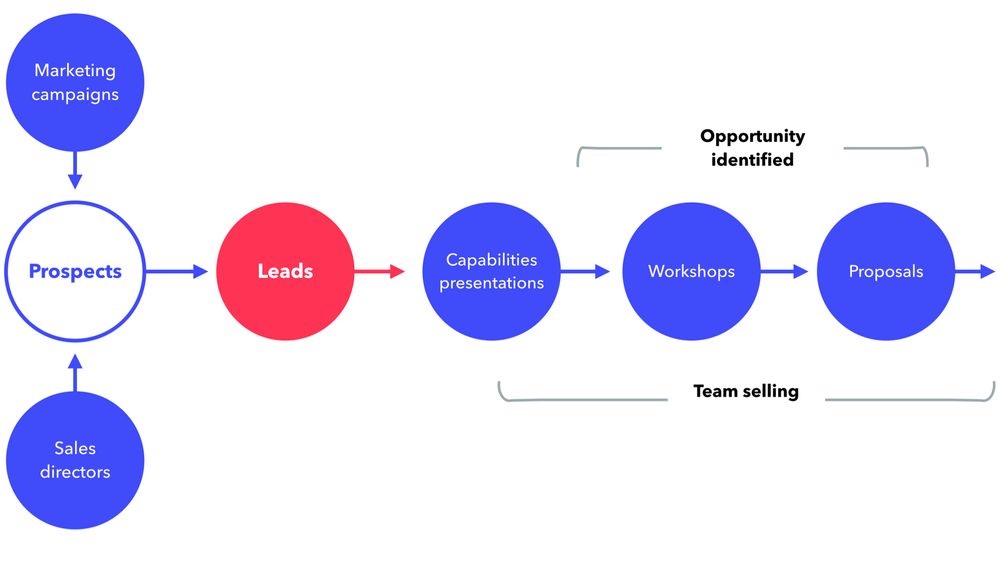Grow or die
Famed management guru Peter Drucker wrote that the objective of a business is to create and retain customers. Creation implies that a business must not only capture existing market share but also create new opportunities and customers. Retention implies that the business must be successful in meeting the expectations of the customer beyond a single initial transaction. Consider that statement in the context of the software industry—our skills, combined with technology, allow our clients and their customers to do more with less. Whether it is an automation of a previously manual process or an introduction of a new product, both increase human effectiveness with technology. Our commitment to “make great things” is paramount to making that a reality.
It is only natural that when we are successful in our endeavors, we will experience growth as a business, and when we fail to deliver we will experience a loss. In our semiannual Q&As with the team we often debate the themes of growth, revenue, and profit. In summary, we believe that:
- We either grow or shrink; there is no idle state.
- Growth is a direct outcome of our success with our clients.
- Revenue goals are used to plan expenses for the year, in addition to necessary investments (offices, people, benefits, training, etc.).
- Profits are necessary both for investment into the business and creation of shareholder value.
Being profitable allows us to maintain a healthy ecosystem of employee growth, availability of advancement opportunities, and the ability to scale to customers’ needs. For example, the majority of our team leads, squad leads, and managing directors grew into their current roles inside the organization. As the organization expands laterally, so do the available positions—be it in management or discipline excellence. A profitable business can reinvest more into the organization, making the offering more competitive and attractive for clients.
This brings us to sales. While organic growth of our existing accounts is the bedrock of our business, sales enables us to share our story with new clients and bring predictability to our pipeline. Though it saddens me to admit, we don’t always succeed, and sometimes clients do decide to work with someone else. Clients also change strategies and stop investing in products we’ve built. In both scenarios, discovering new outbound business can help us establish predictability of revenue.
We grew faster than anticipated in 2018, and our quality suffered on a few strategic accounts. We quickly identified the gaps and implemented improvements, but the clients slowed down their spending and, for the first time in eleven years of Devbridge history, we lost money for six months in a row. I’m oversimplifying what happened to illustrate this scenario, but we would have been in a much stronger position had we had a fat new business pipeline.
What is the ultimate objective of sales? To bring in the dough, right? Providing revenue and projects for a business to operate, however, only covers internal needs and ends up promoting a win-lose mind-set in the team. We’re motivated and incentivized by our clients’ success.
We’ve tied our sales strategy to things that are instinctive and that motivate our teams to make ethical decisions tied to our culture and our values. Our salespeople are consultants who are readily looking out for our clients, enabling them with our know-how, and helping them identify opportunities for success. Our objective is to enable our clients to sell more and be more profitable through technology, which aligns with our core value of “deliver results.”
Managing growth channels
To meet our growth objectives, we leverage three channels of business development:
- existing account growth (also known as farming)
- responding to referred accounts
- outbound pursuit of strategic accounts (also known as hunting)
Inbound referrals and outbound hunting activities proceed through a new business funnel—from the creation of a lead, to showing our capabilities, to identifying an opportunity, to taking the client through a workshop, to then submitting a proposal to deliver the product. Developing existing accounts is very similar. Either a new opportunity surfaces from our primary sponsor or we are introduced to a new group within the organization and we need to start with a presentation of our capabilities.

Driving revenue
There are two things to remember: we sell as a team, and our expertise sells itself. The responsibility of driving revenue falls primarily on the shoulders of our managing directors. Each MD is responsible for over $10 million of revenue per year from a combination of current and new accounts. To help MDs reach their goals, we created a sales role, which strictly focuses on outbound hunting efforts—identifying buyers, reaching out through all possible channels, scheduling capabilities presentations for the managing directors, and incentivizing a workshop.
The outbound sales team are hunters. Hunters are incentivized to strike up interest at target companies. They’re focused on outbound activity (calls, emails, and events) and moving the opportunity to the workshop stage. Their compensation ties directly to the results of capabilities meetings and workshops. More advanced hunters get us closer to closing.
MDs are closers. They assemble the pitch team, build the proposal, provide a consultative experience to the client based on their vertical. MDs and the whole product team are also farmers—individuals who have in-depth domain knowledge of the existing clients’ businesses and who generate additional opportunities within the accounts throughout the lifetime of the partnerships.
Effective MDs grow their accounts through multiple years, looking out for long-term client success instead of large short-term deals. Last, engineering, design, and other departments support the sales process as needed with contributions, tools, knowledge, prototypes, and more.